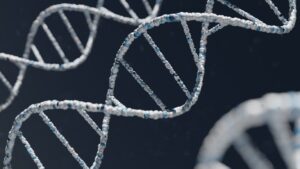APPLICATIONS OF TECHNOLOGY:
Any application that involves using DNA sequencing machines.
BENEFITS:
- Allow substantial increase in yield of DNA sequencing machines without increasing crosstalk
BACKGROUND:
For genetic sequencing, DNA from an actual genome is tagged with a synthetic barcode. This allows multiple experiments from many sources to be physically pooled together and sequenced simultaneously. During sequencing, both the real DNA and synthetic barcode are read. Subsequently, an experiment can be separated from other experiments into its own file to be analyzed independently, without contamination from other pooled experiments. This process is called demultiplexing.
The demultiplexing process aims to correctly assign observed barcodes to the expected barcodes despite errors. However, current methods that rely on measuring Hamming distance ((the number of barcode mismatches) can be inaccurate. Thus, the demultiplexing method must be improved in order to balance between yield (retaining as much data as possible) and contamination (incorrectly assigned data).
TECHNOLOGY OVERVIEW:
Berkeley Lab scientists have developed an improved method of demultiplexing genetic sequencing data. The new software, NovaDemux, uses advanced statistical methods to maximize yield while minimizing misassignment compared to existing software. It improves the process of assigning observed barcodes to expected barcodes in sequencing by using error rate quantification and probability calculations rather than relying solely on Hamming distance. This method can substantially increase yield without increasing contamination.
This software will be useful to any company that uses sequencing machines, such as those that use Illumina Inc. (Hayward, CA) sequencing machines, specifically, Novaseq XTM.
DEVELOPMENT STAGE:
Actual system completed and qualified through test and demonstration.
PRINCIPAL INVESTIGATORS:
Brian Bushnell
IP Status:
Patent pending, copyrighted
OPPORTUNITIES:
Available for licensing
